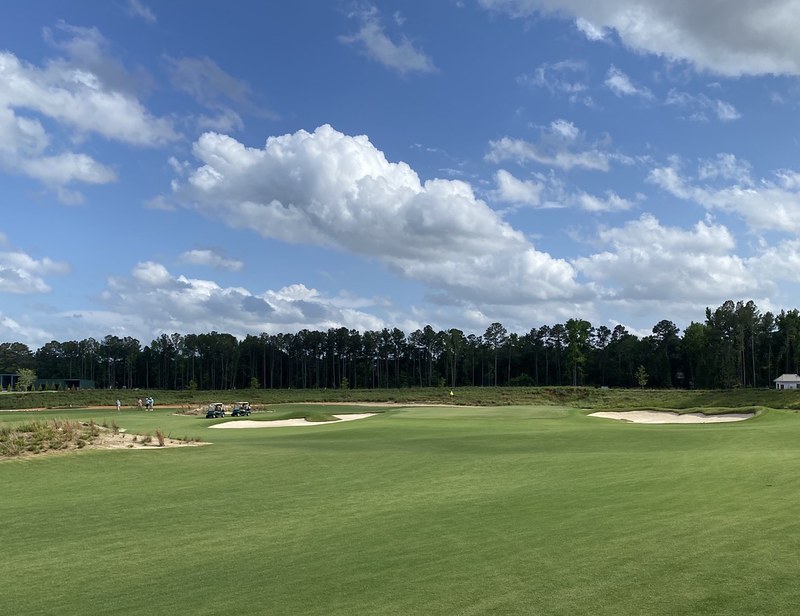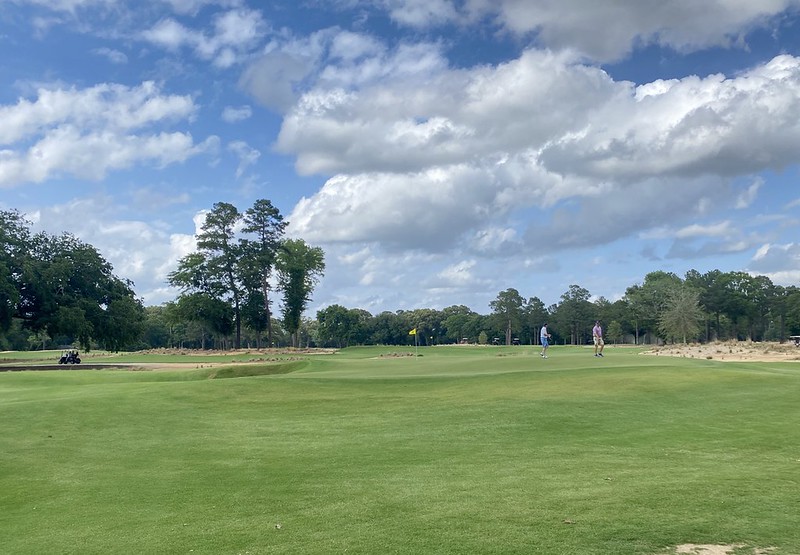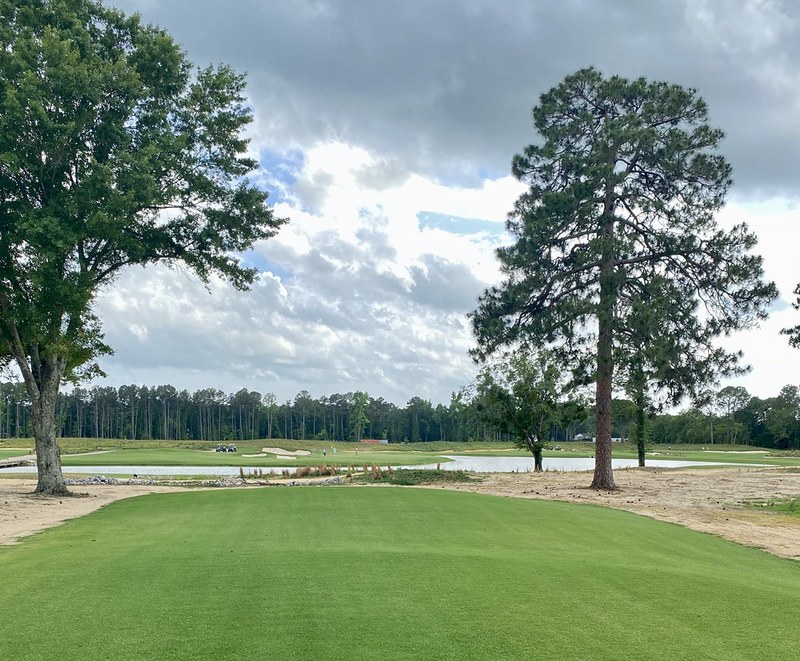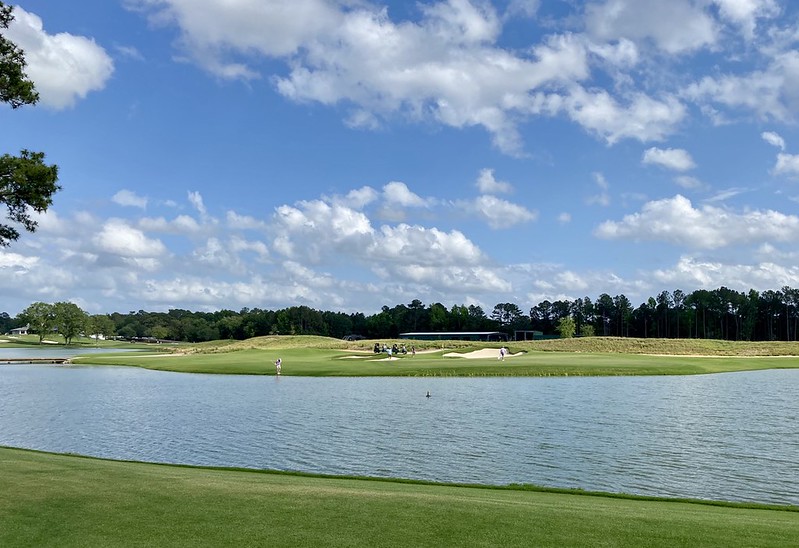Hole 13 / 5 / 544 / 466 / 429 / 401
Most players have decent chance to make it to the green complex in two, but only a perfect and, honestly, a very lucky shot will hit and hold this green from range. In addition to a shallow green which falls into front and back bunkers, a tree imposes from the left side 75 yards from the green. Thus, only a well-shaped shot has a chance and most players would be wise to lay back to a comfortable number.

Looking out over the green, one can see the fourteenth tee shot on the far right and the complex of fifteen green and sixteen tee more central. The property generally falls away from this spot.
 Hole 14 / 4 / 446 / 410 / 392 / 325
Hole 14 / 4 / 446 / 410 / 392 / 325
Fourteen offers a wide fairway and length is the most important issue on this long par four. That said, a better angle is available to players who challenge the right bunker and property line. Tons of grass is available around this green and a variety of recovery shots can be played to correct for poor iron play.
 Hole 15 / 4 / 397 / 360 / 338 / 316
Hole 15 / 4 / 397 / 360 / 338 / 316
Although the left bunker is in play and a bad place to be, the right bunker is out of reach for the majority and serves as a good target on this uphill par four. Right is much better than left considering trees will block out the majority of shots on that side.
Hole 16 / 4 / 329 / 309 / 283 / 270
Sixteen is the last gettable hole on the course, and the shortest par four of the day. Moreover, with a lack of penalty-stroke trouble, players feel free to open the stance and swing. The worst place to be is in the scruff to the right; this is some of the thickest grass on the course.

One of my partners played a five wood, another a three wood, and I hit driver. Really, anything above a five iron may be the answer here. The green features a lion’s mouth bunker and the left tongue is the toughest portion to access.

Some of the most interesting microcontours on the course are found on sixteen and the green is wild. All fitting for a nice short four.
Hole 17 / 3 / 218 / 196 / 178 / 162
The fight to the finish begins with a long par three over water. The green is large and accepting, but with a long iron in hand it’s hard to be too confident standing over the shot. All grass at Quixote is fairway height, meaning a ball which lands on the green may well find its way down to the water.

A separate tee lower and to the right makes the hole more angled and brings the water more into play for right hole locations. In fact, as the below shows, this could just as easily be played from the fifteenth fairway at a ninety-degree angle.

Hole 18 / 4 / 450 / 398 / 386 / 331

The finisher begins with an angled tee shot over the lake. Day to day, the ideal line fluctuates based on tee placement, but the bunker in the center of the fairway is a good place to default to. The fairway slopes down to the lake, and this becomes more severe towards the green. Intelligent players can use the slopes short and left to work the ball towards tough back right locations. The approach is likely a long one, and a par to end the day is all but guaranteed to satisfy.
Final ThoughtsQuixote Club features a strong golf course which overshadows its predecessor by a mile. I doubt that it will draw the world to Sumter, but anyone in the region would do well to make a trip. It is rare indeed to see something unique in golf. Here, the player encounters several such occasions, including the superlative third hole, the hidden sand traps baked into the waste, and truly exceptional tie-in work between many of the holes. One could make the argument that Spence has maximized the potential of a fine but not great piece of land. Combined with a nice clubhouse (which features the local brewery’s best work) and forthcoming additions, the work has given members something to be proud of. I think the course will slot in somewhere in South Carolina’s top twenty courses, and while the project as a whole is bit quixotic, for lack of a better term, the club itself looks set for better days.